8.5 Human Services and Child Welfare
Indian Child Welfare Act (ICWA)
In November 2022, the Supreme Court of the United States heard arguments in Haaland v. Brackeen, which challenged the constitutionality of the Indian Child Welfare Act (ICWA). Watch the video in figure 8.6 for a quick overview of the main arguments of the case. As of this writing, the court has not issued a ruling in the case. If the court strikes down portions of the law, this could have serious ramifications, not only in terms of the well-being of Native American and Native Alaskan (NA/AN) children and families, but for a broad slate of issues related to tribal sovereignty.
https://www.youtube.com/watch?v=vi_7TmjAjL0&t=22s
The practice of removing NA/AN children from their families and placing them in boarding schools and with non-Indian families had its roots in the assimilationist policies of the U.S. government. The government sought to “Americanize” NA/AN children, who were considered by White Americans to be “uncivilized.” Over more than a century of Indian removal policies, the territory held by sovereign NA/NA people was significantly reduced, leaving many impoverished and vulnerable to illness and exploitation. Between 1819 and 1969, the United States operated or supported 408 boarding schools in 37 states or territories (Newland, 2022). Researchers are still trying to determine exactly how many children were removed from their families during this period.
We do know that by the time ICWA was enacted in 1978, 25 to 35% of all NA/AN children had been removed from their homes by state child welfare agencies, and of these, 85% were placed in homes outside of their communities. During the 1950s, ’60s, and early ’70s, more than 80% of NA/AN families had children removed from their homes by the government (Native American Rights Fund [NARF], 2007). In contrast, in 2020, the total number of removals for all children in the U.S was .03% (ACEF, 2022).
ICWA was considered to be a major advancement for tribal sovereignty and self-determination. Casey Family Programs (CFP), one of 26 child welfare and adoption agencies who filed a brief in support of ICWA (CFP, 2022), asserted that the principles of family preservation that ICWA advances are a gold standard in child welfare for all children and families (CFP, 2022). In CFP’s strategy brief, Strong Families, these principles include acknowledging and protecting children’s rights to be connected to their families, supporting efforts to preserve and reunify families, valuing inclusive and diverse cultural practices, and prioritizing authentic tribal engagement.
CFP’s strategy brief reflects a significant trend in the child welfare field toward family preservation and reunification. In 2018, the Family First Prevention Services Act codified this shift by providing prevention funds for mental health services, substance use treatment, and skills training for parents. According to the Children’s Bureau, which is part of the Administration for Children and Families, “This law significantly shifts how the country provides services for families and youth. In particular, it changed the role of community service providers, how courts advocate and make decisions for families, and the types of placements that youth placed in out-of-home care experience” (Child Welfare Information Gateway 2023). This shifting posture is based on overwhelming data that demonstrates the profound long-term harms of out-of-home placement, which we will discuss in the next section.
Child and Family Services
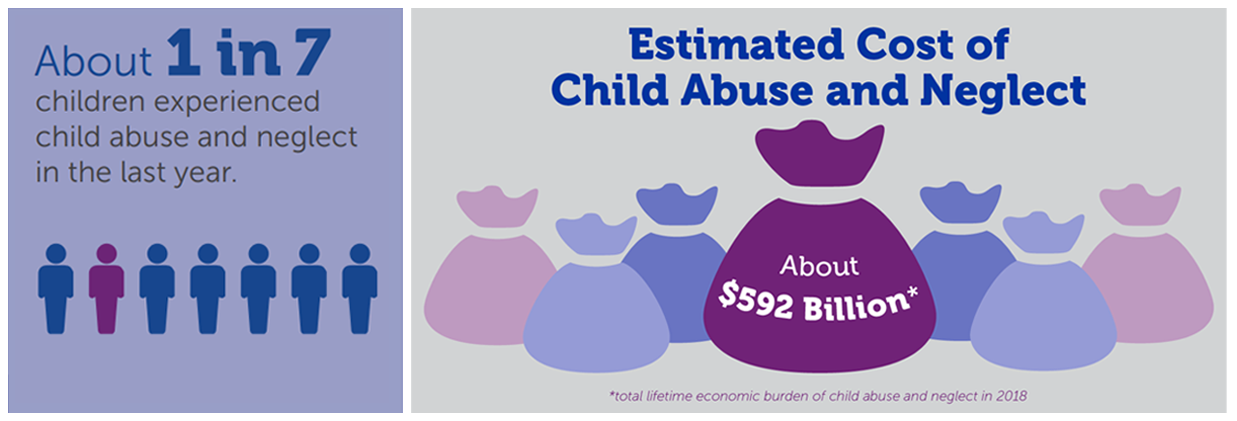
As figure 8.7 illustrates, child abuse, neglect, and exploitation are significant social problems. The U.S. child welfare system is a public response to the social problem of child abuse, which is more formally known as child maltreatment. The three goals of child welfare are safety, permanency, and well-being. A network of federally funded state and tribal child welfare agencies provides a variety of county-level services to ensure the safety, permanency, and well-being of children, youth, and their families.
People who witness child abuse or think a child is being hurt can call 911 or the Oregon Child Abuse Hotline (ORCAH) at 1-855-503-SAFE (7233). Medical providers, school employees, clergy, and other people who work with children are mandated reporters who can face legal consequences for failing to report child maltreatment. It is important to note that each state and profession has a different set of numbers and expectations regarding where to call and what both your ethical and legal obligations are for reporting child abuse. Please look at what your individual state and professional requirements are; the numbers listed above are for the state of Oregon. The state of Oregon does have free online training that gives more information about the requirements for mandated reporters, including information in multiple languages.
In 2021, ORCAH recorded 162,184 contacts (calls to the hotline or police reports). Of those 78,775 were screened as reports of suspected child maltreatment. Screened-in reports can involve information only and referral to other services, not a situation that is child abuse or neglect, or possible child abuse and neglect.
Child Protective Services (CPS) and law enforcement agencies share responsibility for investigating child maltreatment. CPS workers assess reports by interviewing children, families, and others who may be familiar with the child’s situation, such as neighbors and educators. The purpose of the investigation is to determine if the child has been abused and if they are safe in their present situation.
In cases where there is a finding of abuse or neglect, CPS workers and law enforcement will assess further to determine if the child can safely remain at home. Safety planning may include requiring the offending parent to move out of the home or specific in-home services. There are two categories of in-home safety plans: In-Home Safety and Reunification Services (ISRS) and Strengthening, Preserving, and Reunifying Families programs (SPRF). These may include culturally appropriate in-home case management or supervision, assistance accessing stable housing, health care services, and other basic needs, as well as parenting classes, peer-based parenting supports, and respite care. The goals of in-home services are to stabilize families, keep children safe, and reduce removals. SPRF services also aim to support family reunification, reduce the length of time children spend in out-of-home care, and reduce the rates of re-entry into the child welfare system.
Black children, children who identify as LGBTQIA+, and children in poverty are significantly overrepresented in child removal statistics. For example, about 14% of the children in the United States are Black, yet Black children accounted for 23% of children in foster care in 2021(AECF n.d.). That number is down from 29% a decade ago, which indicates that the system as a whole, from the Children’s Bureau to state agencies, along with nonprofits that work with youth in care, are taking racial inequity, gender, and class-based inequities seriously. Yet the disparities remain stubbornly high.
Many low-income families who interact with child and family services report feeling like they are being punished for being poor (HRW, 2022). Sixteen percent of children in the United States were living in poverty in 2020 (AECF, n.d.), yet the majority of children who are identified as victims of child maltreatment live in poverty. It is true that CDC cites poverty as a risk factor for child abuse and neglect (figure 8.6); however, children who are low-income are also more likely to be subject to mandated reporting because of their increased involvement with social services. In other words, families who are seeking help to meet their children’s basic needs are more likely to be reported than families who are well-resourced.
Unconscious bias among child welfare workers and foster families has been identified as a significant cause of these disparities. Many who work in the field can easily remember being taught to treat people fairly and avoid discriminating against people. However, in a society that is stratified by race, gender, and class, those are not the only lessons we learn about difference. Recognizing the socially constructed biased ideas we internalize can sometimes be more arduous. Child welfare workers must proactively identify and question our biases to reduce harm. This is easier to do if, within systems, we implement changes to required training and orientations, including changes in supervision, both group and individual, for providers, along with employee assessments to help guide and encourage growth. This needs to happen at all levels, including leadership. At the same time, organizations must keep people with marginalized identities in the workforce in mind, as they may have the most they have to carry in these conversations.
LGBTQAI+ youth are twice as likely to experience foster care than children who do not identify as LGBTQAI+. They experience higher rates of physical and psychological abuse in their homes, and they are more likely to run away or be rejected from their homes. Once in care, LGBTQAI+ youth are not always well served by the child welfare system. They are more likely to experience discrimination and rejection from foster families, experience bias from case managers, and experience multiple placements (Fish et al., 2019).
Out-of-Home Placements
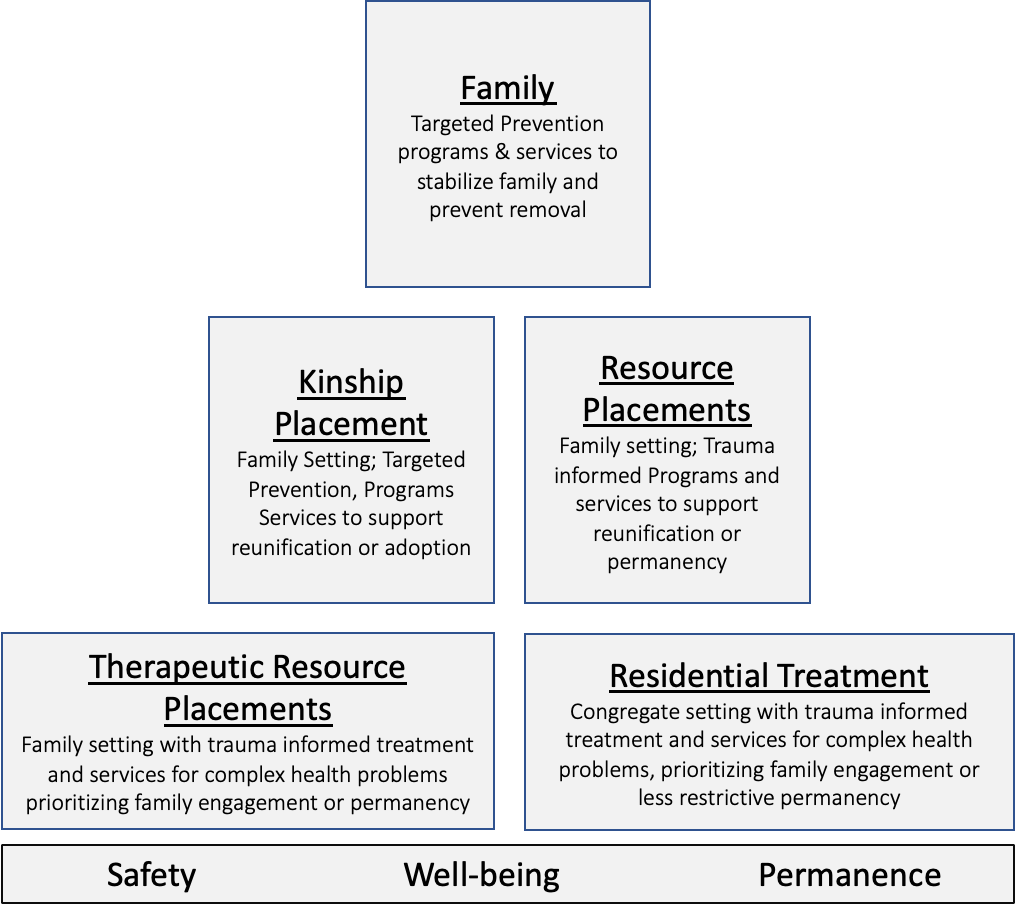
The foster care system is supposed to support safety, well-being, and permanence for children who experience maltreatment, including abuse, neglect, and sexual exploitation. Figure 8.8 describes the range of placements available to youth. These include at-home family placement, kinship placement, resource placements, therapeutic placements, and residential treatment.
However, we must consider a few factors regarding these out-of-home placements. Not too long ago, Oregon did not have enough out-of-home placements available for youth, causing media outrage across the state and the country. The state of Oregon continued to pay millions of dollars to house youth in hotel rooms even after promising to curb the practice in a 2018 legal settlement.
Consider that LGBTQIA+ youth have an even more challenging time finding openly affirming placements, the small percentage of BIPOC placements available, and the additional difficulties for those youth whose first language is not English. Marty Beyer, who was assigned as a special master by a federal judge in the case, gave the following recommendations in 2018 (Dake, 2023):
- Create a system that triggers a response when a child is about to enter a third different placement. The response would bring together all the adults involved in the child’s life, including teachers, therapists, nurses, parents, caregivers, and the child themselves.
- Increase the rates, training, and support for foster parents and relatives caring for children in care.
- Create more resources for BIPOC and LGBTAI+ children in care.
- Create staffed homes for one or two children, where staff are trained to meet the trauma-related and delayed development needs of children.
- Offer trauma treatment that is tailored to children’s needs, and remove any barriers that might prevent them from accessing mental health services through coordinated care organizations.
- Ensure continuity of services and caregivers when a child transitions from one placement to another.
Consider all of these as we look at how to advocate and support growth and change in the systems that clients are participating in and that we will be working in ourselves.
Resource parents, also known as foster parents, open their homes to children and youth who are not safe with their parents or caregivers. When children are not safe in their homes, the support of caring child welfare professionals and loving resource families can provide safety and may provide meaningful relationships that serve as protective factors to mitigate against some long-term effects of abuse.
However, the research is clear that removing children from their families is harmful. Harms can be measured in both long-term and short-term impacts, including disruption to school attendance, loss of peer support, higher rates of depression and anxiety, substance use disorder, criminal justice involvement, and a higher risk of housing insecurity later in adulthood.
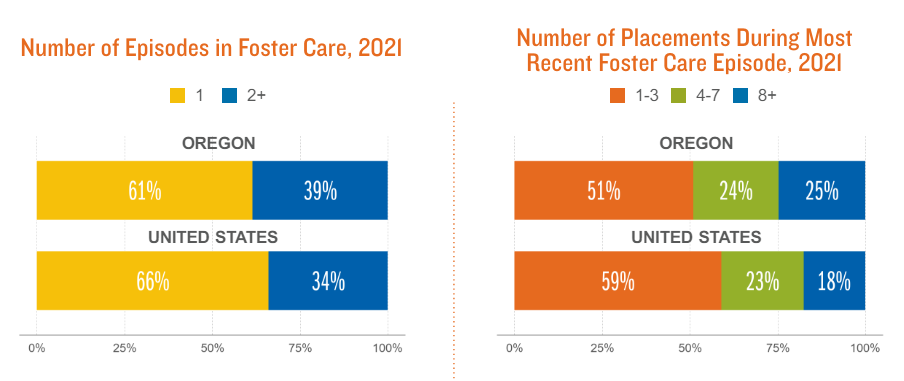
These harms increase significantly with multiple placements, as seen in figure 8.9. Placement instability occurs when children experience two or more placements during care. While most children who are in care for less than a year experience two or fewer placements, placement insecurity increases the longer a child is in care. One-third of children in care for two years experience two or more placements, and that number doubles for children who are in care longer than two years. Youth who experience multiple placements are less likely to achieve permanency, have a harder time in school, and struggle to form meaningful peer connections.
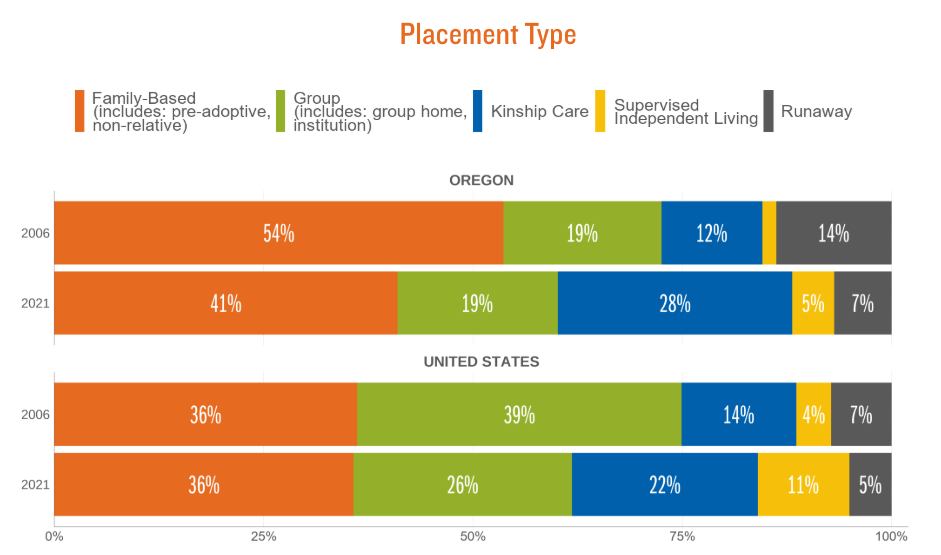
In Oregon, every effort is made to find permanent placement, where a child can stay until they are reunified with their family or adopted by a new forever family. In cases where permanent placements are not available, a child may be placed in shelter care for up to twenty days, until a permanent placement is available. In order to reduce the harms of family separation, advocates for youth in care call for child welfare systems to strive for “first placement, best placement, family placement, only placement” (CFP 2022). Figure 8.10 compares Oregon’s placement options for children under supervision.
Family-based kinship placements, in which children are placed with relatives, are given preference in Oregon. In the event that removal becomes necessary, every effort should be made to identify family (kin) or chosen supportive adults (fictive kin). Kinship providers are required to go though the same training and certification as other resource parents, and receive the same financial and material support. Supportive adults unrelated to a child can also become certified as child-specific resource parents. In 2021, 46.2 percent of youth in care were placed with their own family members.
All resource parents are required to attend an orientation and undergo a Structured Analysis Family Evaluation (SAFE) home study, as well as complete a 27-hour Resource and Adoptive Family Training (RAFT). Recertification requires 30 hours of ongoing training each year.
Therapeutic foster parents offer a safe home-based intervention for children with severe emotional and behavioral disorders. In Oregon, Treatment Foster Care Oregon (TFCO) offers evidence-based support in a nine-month program for at-risk youth that helps both youth and caregivers (TFCO, n.d.). Therapeutic foster parents receive specialized training and are supported with on-call clinical support.
For children with complex behavioral or physical needs who cannot be placed with a suitable resource family, residential treatment in a congregate setting is an option. However, the unnecessary placement of children in institutional settings can exacerbate harm and should be a last resort. In order to reduce the overuse of reliance on congregant placements, the 2019 Family First Prevention Services Act redirected funding away from residential treatment centers and toward prevention and family-based placements.
Special attention is also given to maintaining connections between siblings in care. Whenever possible, siblings are placed together. When this is not possible, resource families and CPS work together to help siblings keep in contact with each other and have regular visits. In 2021, 83.6 percent of sibling groups were placed together in Oregon (Oregon Department of Human Services, 2022).
Exiting Care
In spite of the term, permanent placement, which specifically refers to the time a child is in foster care, is not intended to be permanent. Every child in care has a case plan that outlines the necessary steps to bring children home. During reunification, families, CPS, courts, and other community service providers work together to remove barriers to reunification. If it is safe to do so, parents are encouraged to maintain contact with their children and visit regularly. Steps to reunification can include substance use treatment, anger management counseling, parenting and peer support classes, and securing stable employment and housing. In 2021, 54.3 percent of the 8,620 children who were placed in substitute care were reunified with their families in Oregon (Oregon Department of Human Services, 2022).
The Oregon Department of Human Services (ODHS) is legally authorized to assume permanent custody of a child when a parent’s rights are terminated by the court, when parents relinquish their rights, or when both parents are deceased. In the event that parents are unable to successfully reunify with the child within six months of removal, the case will be amended to include concurrent plans for permanency. Permanency plans can include placement with family or adoption by another family. However, as depicted in figure 8.11, permanency is not achieved for most children who enter foster care in Oregon, which lags behind the United States average.
Guardianship is a legal arrangement that does not require parents to relinquish parental rights and allows non-parental caregivers to exercise parental duties on behalf of a child. In some cases guardianship can also be an option if the child is already a ward of the state. Resource parents can become guardians, but it is more commonly used to make kinship placements more permanent. In Oregon, guardianship for youth exiting care must be approved by a permanency committee, which verifies that the child cannot be safely returned home; that the guardianship will meet the child’s needs for safety, well-being, and permanence; and that the parent accepts the guardianship plan. In 2021, 356 Oregon children exited care via guardianships in Oregon (Oregon Department of Human Services, 2022).
Adoptive parents make a lifelong commitment to welcome a child into their family. Adoption requires birth parents to relinquish parental rights. Many children adopted out of care choose to maintain relationships with their birth parents and families. As with guardianships, adoptions require approval by way of a home study and a period of supervision. In 2021, 683 Oregon children were adopted out of foster care. As of this writing, there are approximately 200 children waiting to be adopted in Oregon. Most of them are older, are part of a sibling group, are BIPOC, or have disabilities (Oregon Department of Human Services, 2022). Nationwide, 32 percent of youth eligible for adoption wait more than three years (NACAC, n.d.).
While most adoptions are successful, as many as 5 percent are either disrupted before finalization or dissolved after they become final. In these cases, children return to foster care and a new permanency plan is developed. Many failed adoptions are the result of families being surprised by unexpected stress and expenses from previously undisclosed or minimized needs. Families Rising, formerly known as The North American Council on Adoptable Children (NACAC), asserts that disruptions and dissolutions can prevent improved preparation, family selection, and support. They also recommend that state agencies and other placement entities fully disclose a child’s background early in the selection process (NACAC, n.d.).
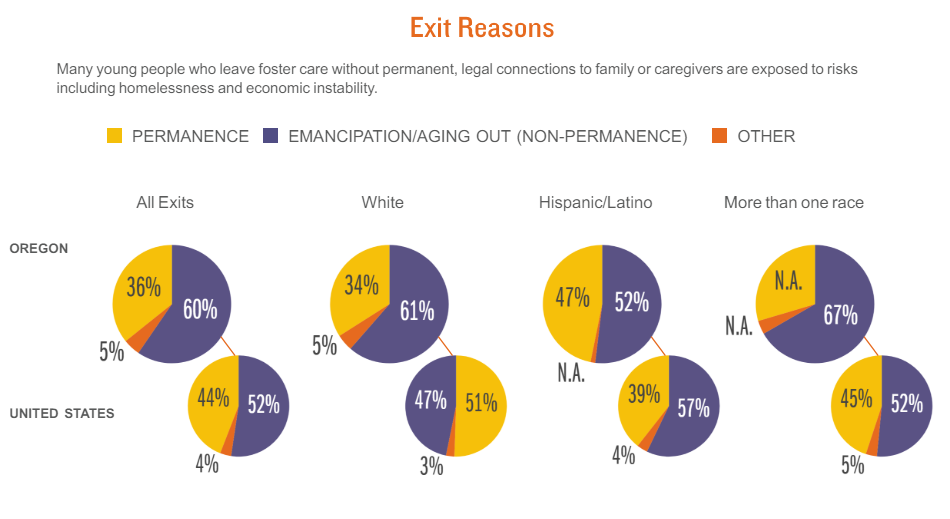
Each year more than 23,000 young people in the United States age out of care without finding permanence. Of these, about 20 percent become instantly homeless when they are discharged from congregate facilities or can no longer stay with resource families (National Foster Youth Initiative, n.d.). Even when circumstances are not quite so dire, young people aging out of care face unique challenges. Independent living programs (ILPs) connect young people with the resources they need to make a successful transition out of care.
Think about all the things young people rely on their families for as they are moving into adulthood—not only deciding on a college, finding a job, or learning how to live on one’s own, but things like filling out the parents’ portion of a federal student aid application or signing for a driver’s license, neither of which a resource parent can do. In these cases, the state assumes the responsibility of parents, and an ILP case worker becomes a critical resource. ILP case workers and youth collaborate to create a transition plan, which becomes an individualized roadmap to successful independence for young people exiting care. Youth can enroll in ILP programs as early as age 14 and remain eligible for aftercare services, including subsidized housing and educational support, until they turn 24.
As helpful as ILP programs are to many young people exiting the foster care system, these programs are not being created by those young people who are or who have been in the foster care system, so they may not feel relevant or helpful to all their needs. Programs may lack some of the soft skills that young people want and need, or feel out of date.
A past student recommends changes to three significant components of the ILP program:
- There should be a mentor program for at least one to two years after exiting care. It need not necessarily be attached to the foster care system, but could be someone who also had experience in the foster care system, perhaps someone who had a couple of years experience outside of it to give accurate life advice.
- There should be a clearly defined programmatic difference between BIPOC young people and non-BIPOC young people, as their experiences are very different, including mixed-race young people. People could self-select as, at times, state and federal demographic information is incorrect, which has caused harm to young people and their families. This would require guidance, conversation, and connection to community organizations with expertise and knowledge in these areas. It would help these young people build communities and networks with community organizations while they are still part of ILP programs, so when they exit care, they start these conversations with warm handoffs. Similar communities can be formed for LGBTQAI+ youth and community organizations.
- The whole program should be examined using a trauma-informed lens, meaning it would be anti-racist. This would shift the conversation and determine what “accomplishments” would look like. It would also give young people opportunities to build more soft skills, like reflective communication, empathy, relationship building, conflict mediation, and advocacy skills.
Around the country, networks for former foster youth, known as alumni of care, are working to improve the child welfare system for children who are coming up behind them. Some alumni even choose careers in child welfare. All of the recent reforms in child welfare, including the FFPSA, have been inspired, informed, and championed by alumni. State welfare agencies are required to have youth advisory boards, and at the national level, former foster youth, and alumni-led organizations regularly lobby lawmakers, sign on to amicus briefs to the courts, and advise the Children’s Bureau and other federal agencies on child welfare policy. They have also created robust peer networks with meaningful connections to help each other find permanence as they work together to make life better for young people impacted by child abuse, neglect, and expoliation. Resilience is a community practice, as visualized in figure 8.12.
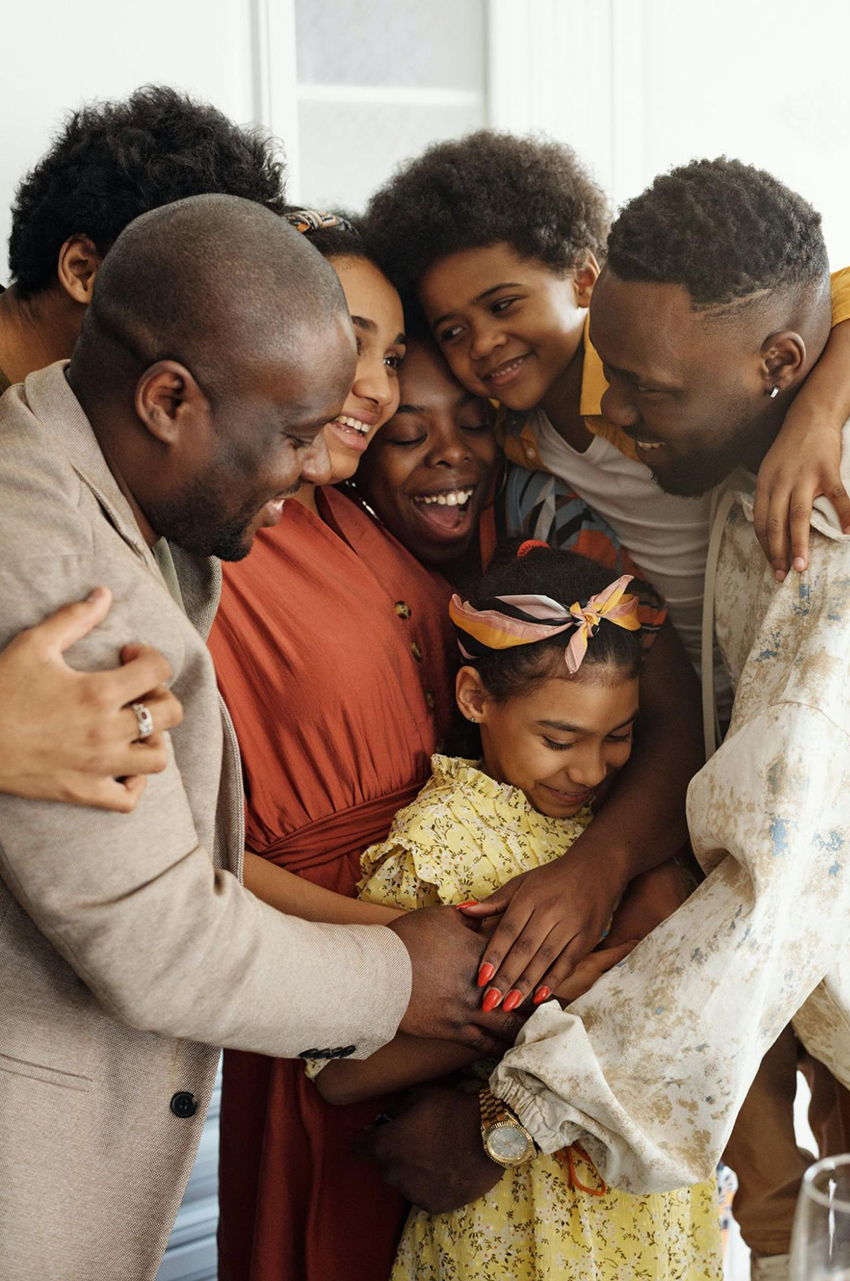
Licenses and Attributions
Open Content, Shared Previously
“Human Services and Child Welfare” is adapted from “Child Welfare” by Nora Karena, licensed under CC BY 4.0. Revised by Martha Ochoa-Leyva.
Figure 8.7. “Fast Facts about Child Abuse” by Nora Karena, is adapted from Centers for Disease Control CAN, Factsheet, 2022 and is in the public domain.
FIgure 8.8. “Types of Foster Placement” by Nora Karena is licensed under CC BY 4.0.
Figure 8.12. Family gathering for a group hug by August de Richelieu is licensed under the Pexels license.
All Rights Reserved
Figure 8.6. “Three-Minute Legal Talks: United States Supreme Court case Brackeen v. Haaland” @University of Washington 2023 Standard YouTube License.
FIgure 8.9. The Annie E. Casey Foundation. (2024). 2023 Oregon Profile. Baltimore, MD: Retrieved from https://assets.aecf.org/m/resourcedoc/aecf-fosteringyouth-stateprofile-OR.pdf.
Figure 8.10. The Annie E. Casey Foundation. (2024). 2023 Oregon Profile. Baltimore, MD: Retrieved from https://assets.aecf.org/m/resourcedoc/aecf-fosteringyouth-stateprofile-OR.pdf.
FIgure 8.11. The Annie E. Casey Foundation. (2024). 2023 Oregon Profile. Baltimore, MD: Retrieved from https://assets.aecf.org/m/resourcedoc/aecf-fosteringyouth-stateprofile-OR.pdf.
“Child Welfare” by Nora Karena is licensed under CC BY 4.0.
Figure 8.8. “Types of Foster Placement” by Nora Karena is licensed under CC BY 4.0.
Figure 8.12. Family gathering for a group hug by August de Richelieu is licensed under the Pexels license.
2021 Oregon Child welfare statistics were adapted from the 2021 Child Welfare Data Book @ 2022 Oregon Department of Human Services, Office of Reporting, Research, Analytics, and Implementation.
Description of the Child Abuse Prevention and Treatment act from Child Welfare Information Gateway. (2019). About CAPTA: A legislative history. Washington, DC: U.S. Department of Health and Human Services, Children’s Bureau. – Adapted for length and context.
well-being
typically refers to any situation where the child’s needs are paramount and their immediate protection takes priority over the other family needs
the social, emotional, and legal process in which children who will not be raised by their birth parents become full and permanent legal members of another family
develop strategies that fend off problems
the intentional emotional, negligent, physical, or sexual mistreatment of a child by an adult
the failure to meet the basic needs of a child
any condition or behavior that has negative consequences for large numbers of people and that is generally recognized as a condition or behavior that needs to be addressed. Multiple factors contribute to the complexity of social problems. Typically the solution to the problem needs to be systemic in nature; in other words, it cannot be solved by any one individual.
a paid career that involves education, formal training and/or a formal qualification.
the state of lacking material and social resources needed to live a healthy life
a temporary placement of a child with another family while parents are resolving issues
the socially constructed perceptions of what it means to be male, female or nonbinary in the way you present to society
socially created and poorly defined categorization of people into groups on basis of real or perceived physical characteristics that has been used to oppress some groups
the language an individual learns in early childhood
results from an event, series of events, or set of circumstances that is experienced by an individual as physically or emotionally harmful or life threatening and that has lasting adverse effects on the individual’s functioning and mental, physical, social, emotional, or spiritual well-being
conditions that might cause someone to become houseless or that are hazardous to the health of occupants of a home
People related to one another. Family
action taken to improve a situation or address a problem
a professional field focused on helping people solve their problems.
a certification conferred by the government or an educational institution that is required for certain occupations.
an experienced individual who helps to guide a mentee, the less experienced person in their learning and growth.
being able to feel and relate to another’s feelings.

